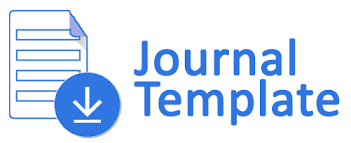Penggunaan Media Adiktif (Animasi Media Interkatif) Untuk Pengenalan Huruf Abjad Pada Anak Usia Dini
DOI:
https://doi.org/10.29407/pn.v7i2.16560Keywords:
Anak Usia Dini, Pengenalan Huruf Abjad, Media InteraktiAbstract
The purpose of this study is to create new innovations to develop learning media for children so as to make children motivated and attract children's interest in learning the introduction of letters of the alphabet. This ADDICTIVE media was created through the Power Point Application. ADDICTIVE media is equipped with a display of alphabet letters that vary in color, there are animated images to attract children's interest, and is equipped with voice messages if children are still confused about the letters of the alphabet. This ADDICTIVE media was created to introduce the letters of the alphabet to early children and introduce children to technology.This study uses a development research model with Borg and Gall theory as a reference.The process of stages in this research, the researcher simplifies and restricts into three stages, namely: data collection, product design and design validation. The results of the calculation of the validation assessment of the acquisition of a value of more than 0.50 means that the value of valid requirements and product feasibility is obtained, then the product made by the researcher can be categorized as valid (feasible) and the acquisition of a value of less than 0.50 can be categorized as invalid (not feasible). Suggestions for further research is that the results of this research can be used as research references and to be taken into consideration to further deepen further research that is more interesting for early childhood.
Downloads
References
Anggraini, Yulsyofriend, dkk. (2019). Stimulasi Perkembangan Bahasa Anak Usia Dini Melalui Lagu Kreasi Minangkabau Pada Anak Usia Dini. Pedagogi : Jurnal Anak Usia Dini Dan Pendidikan Anak Usia Dini.
Aris. (2014).. Pengembangan Kreativitas Pada Anak Usia Dini Melalui Aktivitas Bermain. Jurnal Ilmiah Guru “COPE”: 01
Ariyanti. (2016). Pentingnya Pendidikan Anqk Usia Dini bagi Tumbuh Kembang Anak. PGPAUD Universitas Muhammadiyah Purwokerto.
Bakhri. (2019). Animasi Interaktif Pembelajaran Huruf dan Angka Menggunakan Model ADDIE. INTENSIF: Jurnal Ilmiah Penelitian Dan Penerapan Teknologi Sistem Informasi. https://doi.org/10.29407/intensif.v3i2.12666
Dewi K. (2017). Pentingnya Media Pembelajaran. Jurnal Pendidikan Anak Usia Dini.
Dhieni, N. (2010). Metode Pengembangan Bahasa. Universitas Terbuka.
Faris, A., & Lestari, A. F. (2016). Rancangan Animasi Pembelajaran Interaktif Alfabet Pada Pendidikan Anak Usia Dini. Jurnal Teknik Komputer AMIK BSI (JTK).
Haryati S. (2012). ESEARCH AND DEVELOPMENT (R&D) SEBAGAI SALAH SATU MODEL PENELITIAN DALAM BIDANG PENDIDIKAN. Academia.
Hendryadi. (2014). CONTENT VALIDITY. Teorionline Personal Paper, 5.
Ita E, Wewe M, dan Goo E. (2020). Analisis Perkembangan Kemampuan Bahasa Anak Kelompok A Taman Kanak-Kanak. Al-Athfaal: Jurnal Ilmiah Pendidikan Anak Usia Dini, 3, 13.
Khadijah. (2016). Pengembangan Kognitif Anak Usia Din. Perdana Publishing.
Khairi, H. (2018). KARAKTERISTIK PERKEMBANGAN ANAK USIA DINI DARI 0-6 TAHUN. Jurnal Warna, 2.
Khaironi, M. (2018). Perkembangan Anak Usia Dini. Jurnal Golden Age.
Nurbiana, D. (2012). Metode Pengembangan Bahasa. Universitas Terbuka.
Pangastuti, R., & Hanum, S. F. (2017). Pengenalan Abjad pada Anak Usia Dini Melalui Media Kartu Huruf. Al-Hikmah : Indonesian Journal of Early Childhood Islamic Education.
Permendikbud. (2014). Permen 137 tahun 2014. Menteri Pendidikan Dan Kebudayaan.
Putra, L. D., & Ishartiwi, I. (2015). PENGEMBANGAN MULTIMEDIA PEMBELAJARAN INTERAKTIF MENGENAL ANGKA DAN HURUF UNTUK ANAK USIA DINI. Jurnal Inovasi Teknologi Pendidikan. https://doi.org/10.21831/tp.v2i2.7607
Qudsyi, H. (2010). Optimalisasi pendidikan anak usia dini melalui pembelajaran yang berbasis perkembangan otak. Buletin Psikologi, 18(2), 1–21.
Sakkinah, Mushawwir, Wardani, & Prasetya. (2016). Adventure alphabet game: game pengenalan huruf. Prosiding Sentia, 8, 4.
Saputra, S. (2019). Pengembangan media pembelajaran pengenalan huruf dan angka untuk anak Taman Kanak-kanak (TK). Seminar Nasional Teknologi Informasi Dan Komputer.
Saripudin, A. (2019). Perkembangan Bahasa Anak Usia Dini Ditinjau dari Standar Tingkat Pencapaian Perkembangan Anak. Jurnal Pendidikan Bahasa Dan Sastra Indonesia.
Suardi, I. P., Ramadhan, S., & Asri, Y. (2019). Pemerolehan Bahasa Pertama pada Anak Usia Dini. Jurnal Obsesi : Jurnal Pendidikan Anak Usia Dini.
Sugiyono. (2013). Metode Penelitian dan Pengembangan (Research and Development/R&D). Bandung: Alfabeta.
Trimantara, Mulya, & Liyana, U. (2019). Mengembangkan Bahasa Anak Usia 4-5 Tahun Melalui Alat Permainan Edukatif Puzzle. Al-Athfaal: Jurnal Ilmiah Pendidikan Anak Usia Dini, 2, 10.
Wicaksana, G. (2011). Buat Anakmu Gila Baca. Buku Biru.
Pembelajaran. Jakarta: Bumi Aksara.
Bambang. (2008). Teknologi Pembelajaran: Landasan &Aplikasinya. Jakarta: Rineka.
Downloads
Published
Issue
Section
License
Authors who publish with this journal agree to the following terms:
- Copyright on any article is retained by the author(s).
- The author grants the journal, right of first publication with the work simultaneously licensed under a Creative Commons Attribution License that allows others to share the work with an acknowledgment of the work’s authorship and initial publication in this journal.
- Authors are able to enter into separate, additional contractual arrangements for the non-exclusive distribution of the journal’s published version of the work (e.g., post it to an institutional repository or publish it in a book), with an acknowledgment of its initial publication in this journal.
- Authors are permitted and encouraged to post their work online (e.g., in institutional repositories or on their website) prior to and during the submission process, as it can lead to productive exchanges, as well as earlier and greater citation of published work.
- The article and any associated published material is distributed under the Creative Commons Attribution-ShareAlike 4.0 International License









